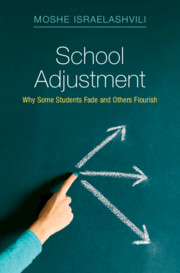Refine search
Actions for selected content:
316 results
9 - Reimagining the State
-
- Book:
- States of Transition
- Published online:
- 31 October 2025
- Print publication:
- 13 November 2025, pp 207-221
-
- Chapter
- Export citation
1 - Introduction
-
- Book:
- States of Transition
- Published online:
- 31 October 2025
- Print publication:
- 13 November 2025, pp 1-24
-
- Chapter
- Export citation
Epilogue - Democracy Unrestorable
-
- Book:
- Moral Autopsy
- Published online:
- 18 November 2025
- Print publication:
- 30 October 2025, pp 265-274
-
- Chapter
- Export citation
11 - 2012–2014
-
- Book:
- Choosing Defeat
- Published online:
- 07 October 2025
- Print publication:
- 07 October 2025, pp 327-357
-
- Chapter
- Export citation
Chapter 32 - Transgender and Non-Binary Identities
- from Part V - Afterlives and Future Fields
-
-
- Book:
- Michael Field in Context
- Published online:
- 03 October 2025
- Print publication:
- 25 September 2025, pp 306-314
-
- Chapter
- Export citation
9 - Law-Washing the Transitional State
-
-
- Book:
- Reckoning with Law in Excess
- Published online:
- 09 September 2025
- Print publication:
- 25 September 2025, pp 212-231
-
- Chapter
-
- You have access
- Open access
- HTML
- Export citation
Case 47: - Gender Dysphoria
- from Part 1: - Vignettes
-
- Book:
- Practise Psychiatry
- Published online:
- 04 September 2025
- Print publication:
- 18 September 2025, pp 392-400
-
- Chapter
- Export citation

School Adjustment
- Why Some Students Fade and Others Flourish
-
- Published online:
- 29 August 2025
- Print publication:
- 07 August 2025
Advances in unsteady computational aerodynamics with separation: The 61st Lanchester memorial lecture
-
- Journal:
- The Aeronautical Journal / Volume 129 / Issue 1339 / September 2025
- Published online by Cambridge University Press:
- 19 August 2025, pp. 2355-2382
-
- Article
-
- You have access
- Open access
- HTML
- Export citation
Involvement of older adults in shared decision-making on care transitions in the UK: an interpretative qualitative systematic review
-
- Journal:
- Ageing & Society / Volume 45 / Issue 11 / November 2025
- Published online by Cambridge University Press:
- 13 August 2025, pp. 2500-2525
- Print publication:
- November 2025
-
- Article
-
- You have access
- Open access
- HTML
- Export citation
Chapter 8 - Adjustment to High School
-
- Book:
- School Adjustment
- Published online:
- 29 August 2025
- Print publication:
- 07 August 2025, pp 253-280
-
- Chapter
- Export citation
13 - Late Antique Cemeteries
- from Part I - Architecture and Iconography
-
- Book:
- The Cambridge Encyclopaedia of Late Antique Art and Archaeology
- Published online:
- 04 July 2025
- Print publication:
- 31 July 2025, pp 244-262
-
- Chapter
- Export citation
12 - Conclusion
-
- Book:
- Property Law in China
- Published online:
- 09 July 2025
- Print publication:
- 24 July 2025, pp 347-354
-
- Chapter
- Export citation
Parents’ Insights on Post-Transition Support for Students on the Autism Spectrum in Secondary Schools
-
- Journal:
- Australasian Journal of Special and Inclusive Education / Volume 49 / Issue 2 / December 2025
- Published online by Cambridge University Press:
- 10 July 2025, pp. 111-125
-
- Article
-
- You have access
- Open access
- HTML
- Export citation
The transfer process from child and adolescent mental health services to adult mental health services for patients with childhood-onset neurodevelopmental disorders: first case–control study from Türkiye
-
- Journal:
- BJPsych Open / Volume 11 / Issue 4 / July 2025
- Published online by Cambridge University Press:
- 26 June 2025, e128
-
- Article
-
- You have access
- Open access
- HTML
- Export citation
Temporal profiles of indicators of oxidative status in plasma and mammary cells during regenerative involution of dairy goats
-
- Journal:
- Animal Nutriomics / Volume 2 / 2025
- Published online by Cambridge University Press:
- 24 June 2025, e15
-
- Article
-
- You have access
- Open access
- HTML
- Export citation
Film, narrative agency, and the politics of care in veteran Britain
-
- Journal:
- Review of International Studies , First View
- Published online by Cambridge University Press:
- 29 April 2025, pp. 1-18
-
- Article
- Export citation
Congenital Heart Disease transition practices in the United States: a survey of adult Congenital Heart Disease programs
-
- Journal:
- Cardiology in the Young / Volume 35 / Issue 5 / May 2025
- Published online by Cambridge University Press:
- 16 April 2025, pp. 908-914
-
- Article
-
- You have access
- Open access
- HTML
- Export citation
Do psychotic symptoms predict future psychotic disorders in adolescent psychiatry inpatients? A 17-year cohort study
-
- Journal:
- Psychological Medicine / Volume 55 / 2025
- Published online by Cambridge University Press:
- 03 April 2025, e108
-
- Article
-
- You have access
- Open access
- HTML
- Export citation
A Positive Legacy? UN Peace Operations and Renewable Energy
-
- Journal:
- Ethics & International Affairs / Volume 38 / Issue 4 / Winter 2024
- Published online by Cambridge University Press:
- 04 March 2025, pp. 444-463
-
- Article
-
- You have access
- Open access
- HTML
- Export citation
